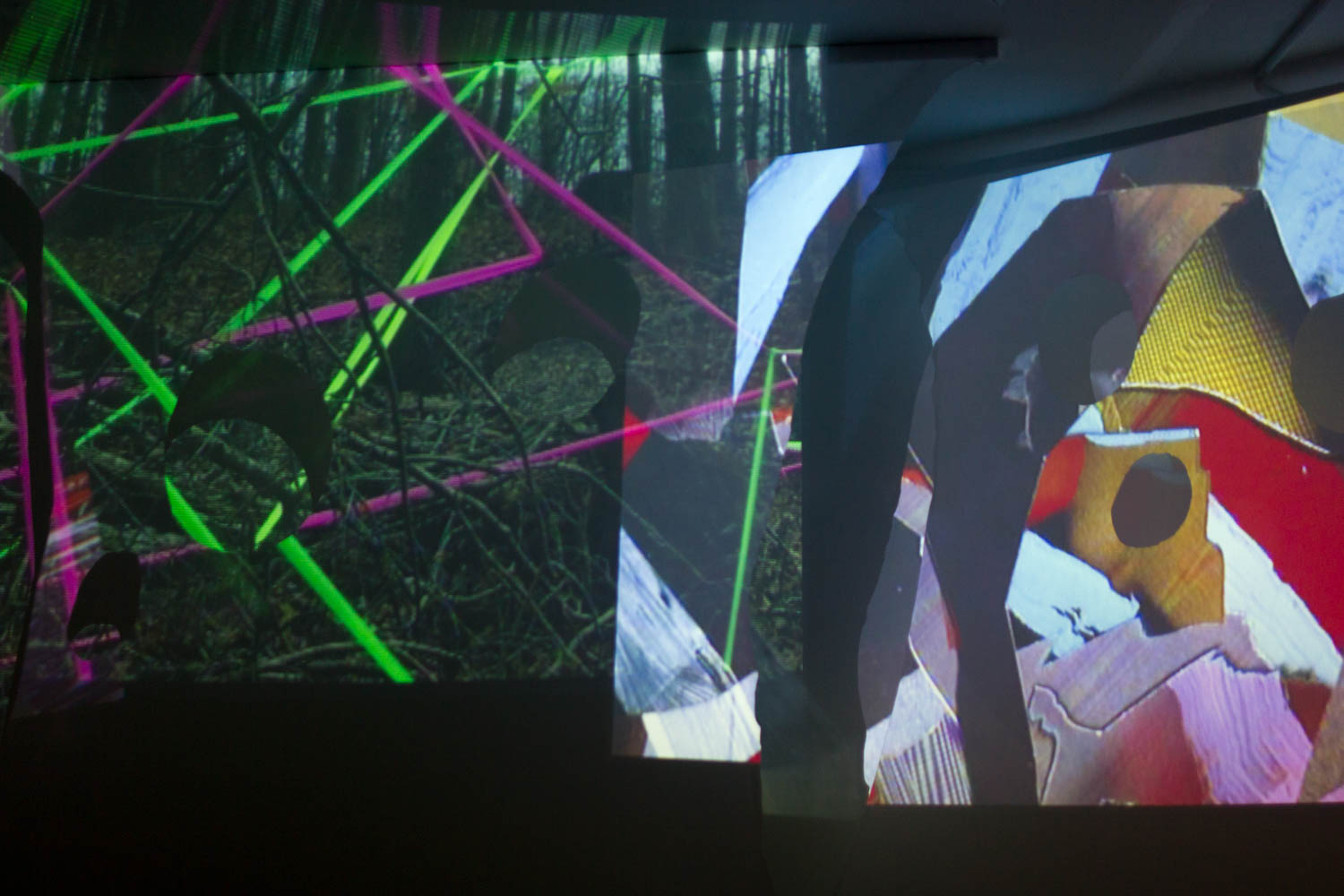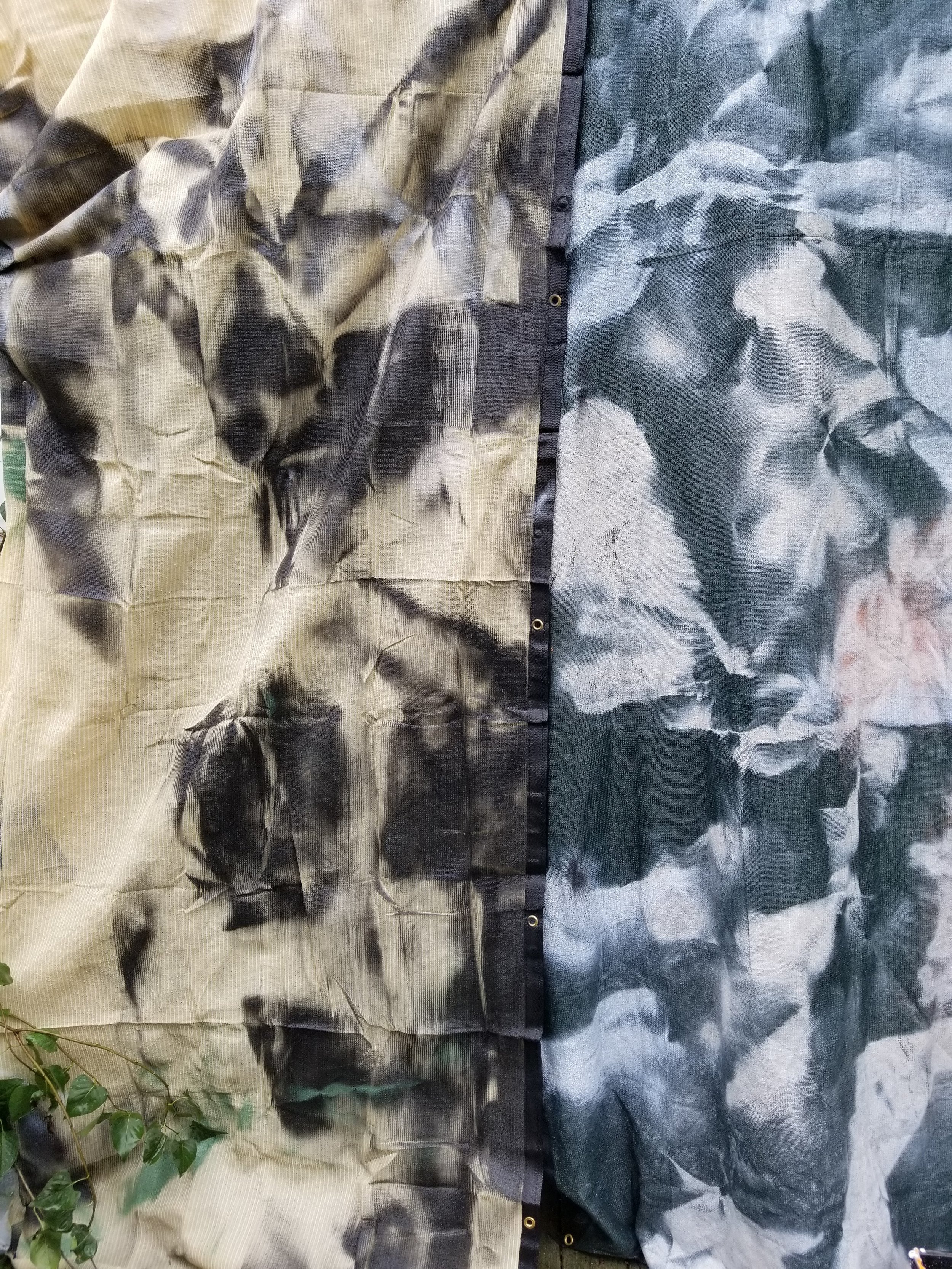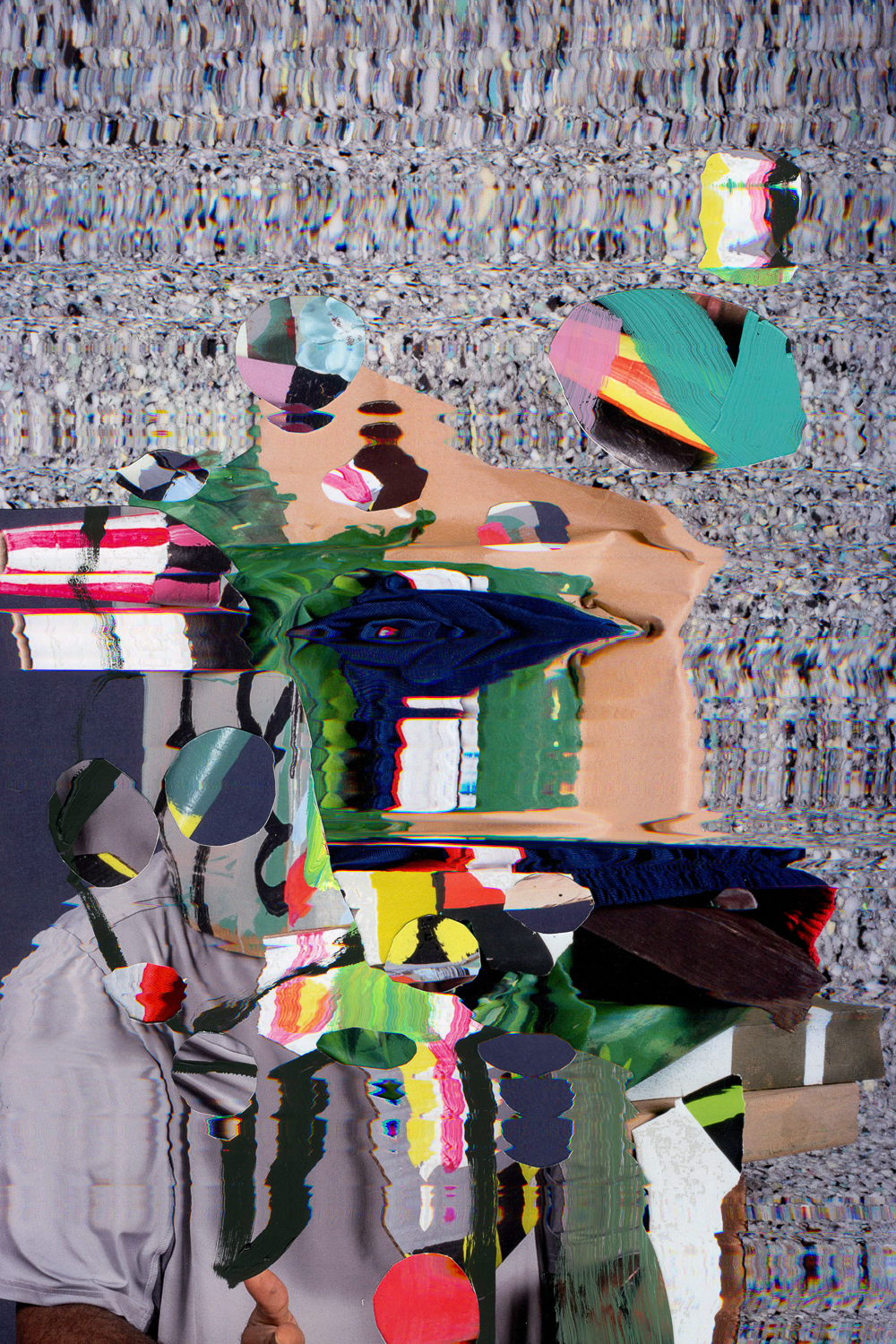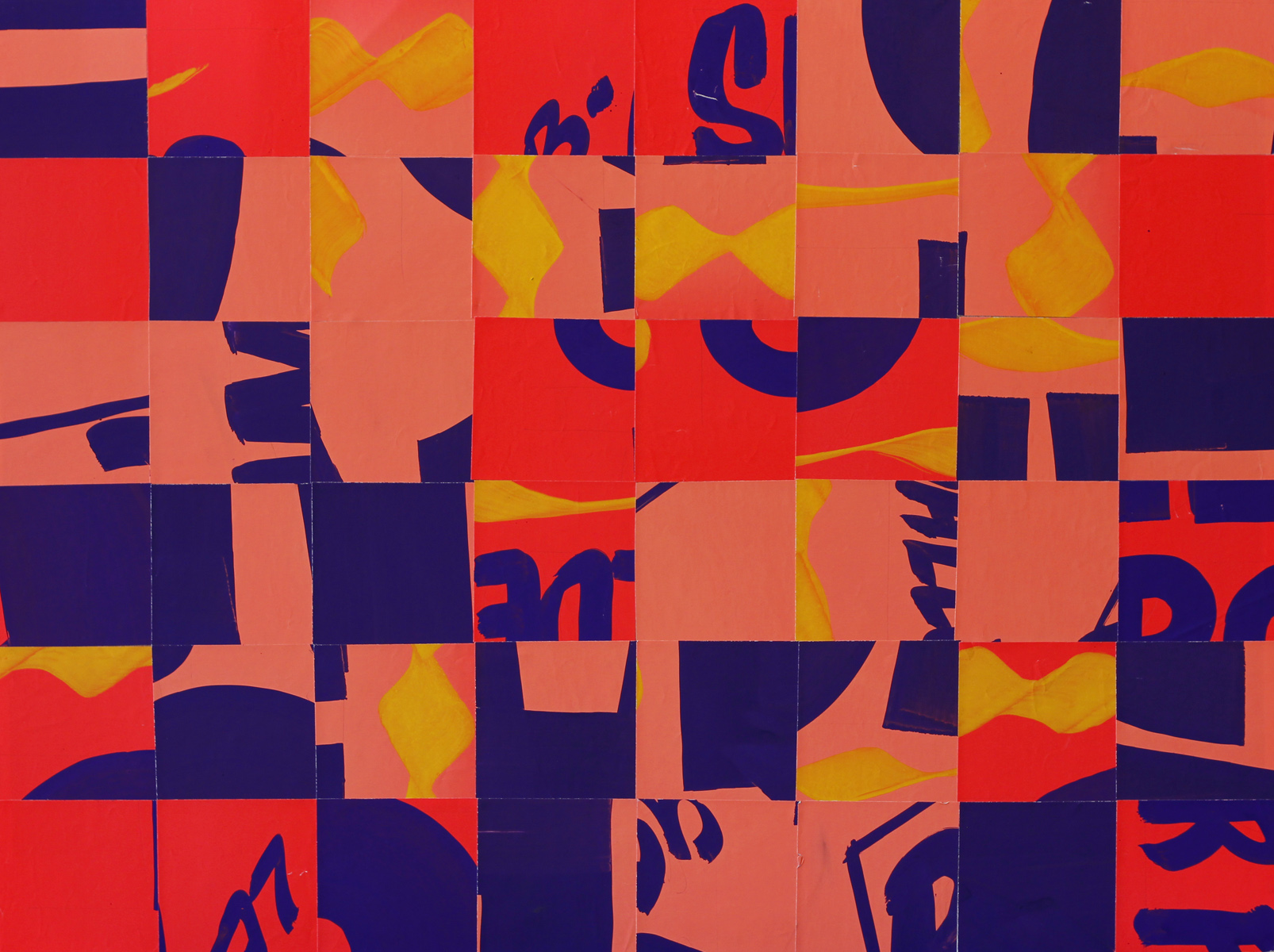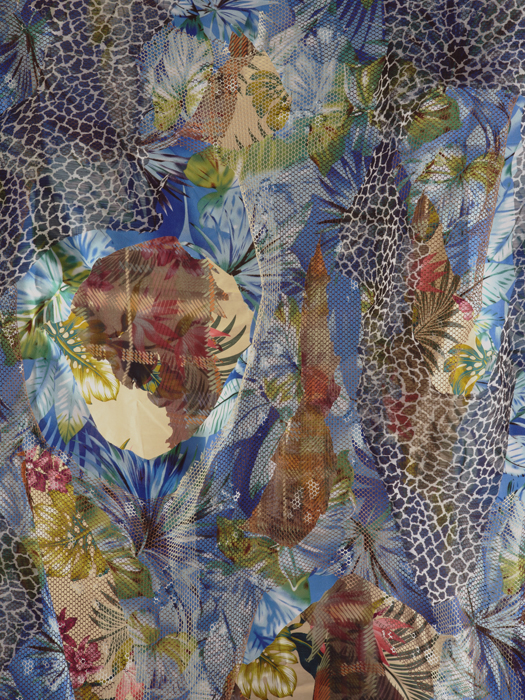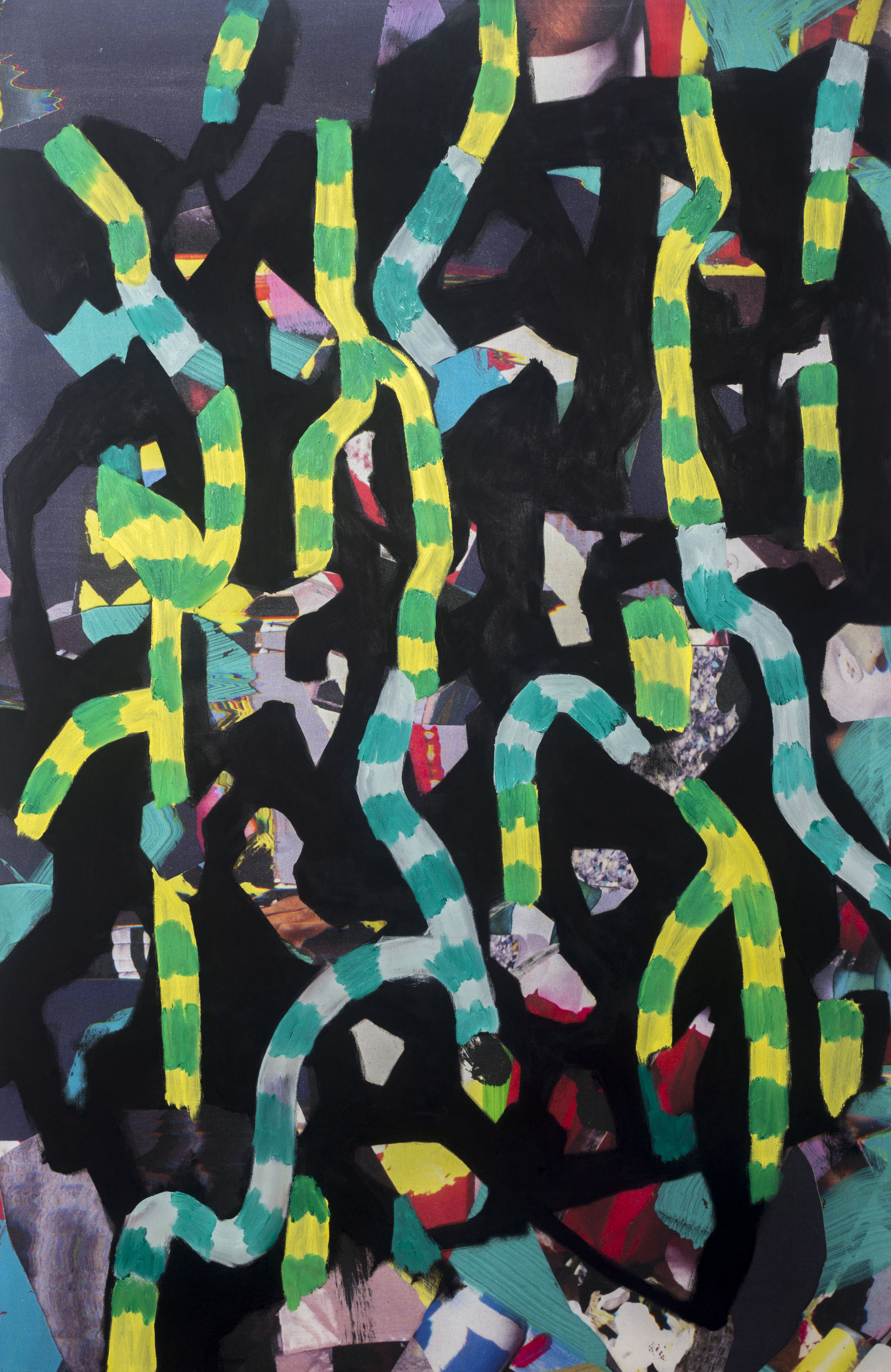I see the logic of collage as the overarching principle that runs through my visual practice, which encompasses painting, photographic processes, installation and performance. Much of my work has in fact has used the literal building blocks of collage--glued fragments of paper--but I see a deeper resonance in the term “collage” as a way to point to processes of translation and disruption that images go through: the ruptures that occur when something is removed from its context; the reactions that arise when it is grafted onto another system; how the “edges” of these interactions engender different results if they are smoothly cut or jaggedly torn, seamlessly integrated or bluntly repelling each other.
My core research at the moment involves recursive looping between photographic and painting processes: painted objects that become photographed, photographic fragments printed/painted/torn, ad hoc collages of these fragments arranged on flatbed scanners, and inkjet printed canvases of these scans functioning as starting points for oil paintings. This promiscuity between analog/digital, photographic/painted, and ordered/unhinged in my own practice is also what excites me about the broader state of painting in our current moment.
I’m curious about the perceptual dynamics that affect how a viewer reads the outputs of these processes, and this has brought about an interest in Gestalt psychology, theories of camouflage, issues of signal-versus-noise, fugue structures, signalling theory, and hallucination. I see a thread of continuity between the aesthetics of collage and the functioning of camouflage in that they both seek to conflate a figure/ground experience on a basic visual level that points to a viewer’s perceptual scaffolding.
